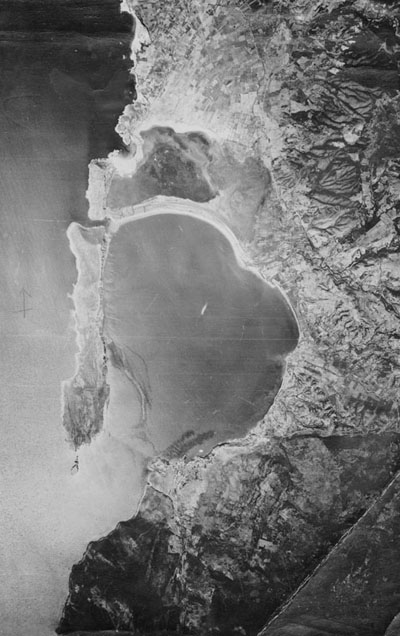LILIAN HAMILTON JEFFERY1915-1986 4. Wartime ServiceThe outbreak of war found her in Cambridge. Here she had her first experience of teaching as Temporary Assistant Lecturer to the evacuees of Bedford College, London. To a girl of twenty-five, this did not seem war-work comparable with what her male contemporaries were doing, and in 1940 she enrolled herself as a VAD at Cheltenham Military Hospital. In 1941 a more fruitful use of her talents became available. Volunteering for the WAAF in April, she was eventually summoned in November. There had been growing recognition of the importance of aerial photography and its interpretation. Ability to attend to detail and a keen visual memory were important; archaeological experience was thus thought particularly useful. Spells as a recruit and as an officer cadet at RAF Morecambe broadened her experience, even to the drilling of recruits, but she spent most of the rest of the war at the centre of air photography, Medmenham. A peculiarity of sight denied her the stereoscopic vision needed for work on the photographs, and her line was intelligence rather than direct interpretation.  An unique item in the archive is this aerial photograph of Pylos and Sphakteria labelled "c. 1943" which LHJ must have acquired during her wartime service with the RAF interpreting aerial reconnaissance data Medmenham was a place where many Oxford and Cambridge academics and archaeologists congregated, and she had a fairly interesting and congenial war, not stagnating and making lifelong friends. It is not clear how much use she made of the work-notes she took with her; either she or a similarly-placed colleague was put on a charge for 'keeping rubbish under the bed'. Life in the RAF left a permanent, though inoffensive, mark on her vocabulary. In her correspon-dence this combined with a Victorian penchant for underlining and abbreviation to produce a totally personal effect. | |||||
|---|---|---|---|---|---|
| Raubitschek | Contents | Poinikastas Home | LMH | ||